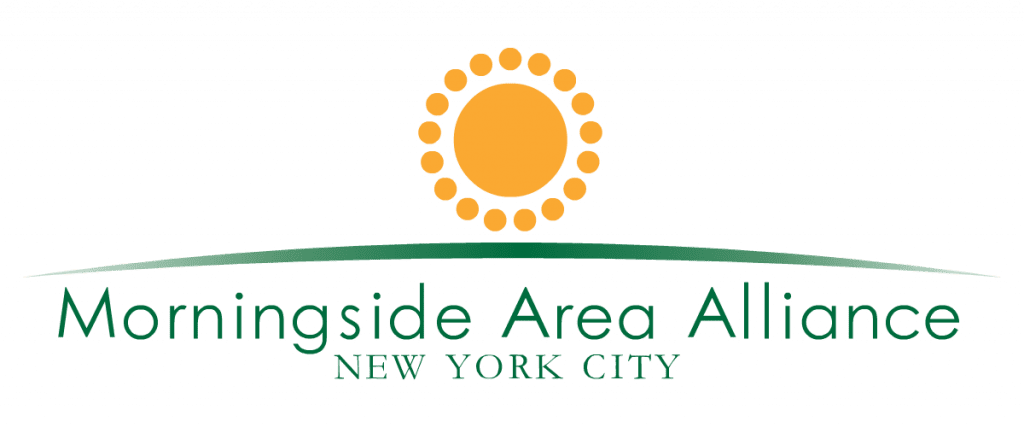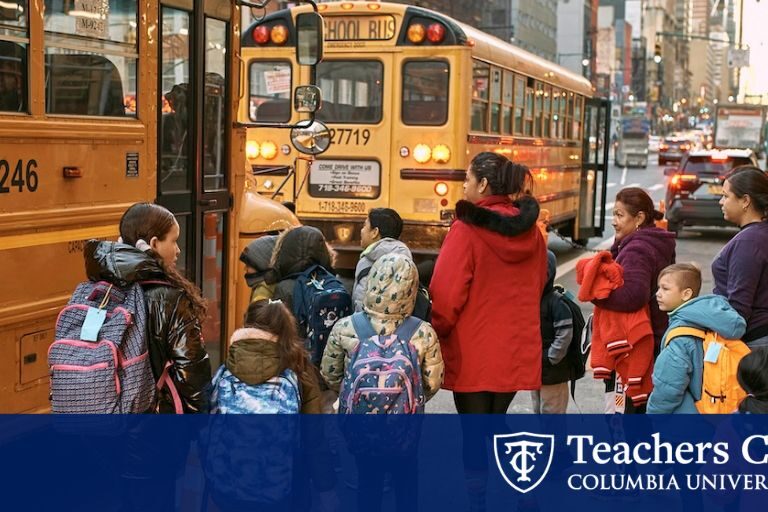A lack of teachers, misconceptions on language learning and problematic assessment practices are long-standing problems made more urgent by the arrival of new students.
Inclusive education strategies can boost language acquisition.
While some solutions can be implemented in classrooms, systemic change is needed.
Since 2022, the New York City public school system has welcomed more than 34,000 migrant children as students. The influx of new students — driven in part by border state governors bussing newly-arrived migrants to cities like New York and Chicago — increased the pressure on an already overtaxed educational system grappling with far too few bilingual teachers, not enough time to connect with parents or students, and outdated assessment practices, among other difficulties. While these issues are not new, solutions are urgently needed as the population of English language learners (ELLs) increases. As of 2021, more than one in ten students were ELLs, an increase of 35 percent since 2000, and that number is expected to grow. According to projections from the National Association for the Education of Young Children (NAEYC), 40 percent of students will be ELLs by 2030.
Without much-needed support, migrant children — especially children with disabilities — are at risk of being pushed to the sidelines in schools. However, teachers report facing an uphill battle amid the ongoing teacher shortage and the profession’s everyday challenges, which include a lack of resources and an already lacking infrastructure for bilingual education. “This is an opportunity to also diversify our schools,” New York City teacher Rosie Frascella told NPR late last year. “There’s a really strong need in the United States for us to be multilingual. Most of the world is multilingual.”
Addressing the complex needs of these emergent bilingual students, many of whom endured difficult journeys, will require adaptations on all levels of education, from the classroom to policy. However, TC experts have research-based recommendations on what will help all students feel recognized and supported in the classroom.
Patricia Martínez Álvarez, Associate Professor of Bilingual/Bicultural Education; Carmen Martínez-Roldán, Associate Professor of Bilingual/Bicultural Education; María-Paula Ghiso, Professor of Literacy Education; Carol Hammer, Professor of Communication Sciences and Disorders; Vivian Lindhardsen, Senior Lecturer of Applied Linguistics & TESOL; and Sarah Creider, Lecturer, Applied Linguistics and TESOL. (Photos: TC Archives)
Addressing the teacher shortage through robust preparation
For Clearer Reading
Home language: The language most commonly spoken by a family at home. Can also be called native language, family language, or first language.
Emergent bilingual: A student who is learning a second language while continuing to develop their home language skills.
Despite having a right to home language support, if not bilingual instruction, many emergent bilingual students in NYC aren’t receiving the resources they’re legally entitled to due to a longstanding bilingual teacher shortage. The lack of Spanish-speaking bilingual teachers derives from a broader teacher shortage that worsened during the pandemic; however, there is also a shortage of bilingual teachers “who know how to adapt the curriculum to address the particular needs of students in their classrooms,” says Carmen Martínez-Roldán, Associate Professor of Bilingual/Bicultural Education.
While it can’t compensate for fewer teachers, graduate programs that provide educators with the skills to differentiate, or tailor curriculum and instruction to each student’s needs, helps “build a critical sense so that [teachers] can handle unforeseen circumstances,” says Vivian Lindhardsen, Senior Lecturer of Applied Linguistics & TESOL. This flexibility is particularly important for English as a New Language (ENL) teachers, who interface with teachers across all subject areas. Conversely, educators with a rigid practice that focuses purely on following curriculum standards struggle to adapt to the constantly changing needs in their classrooms, which can contribute to higher attrition rates in the field because “they don’t feel well-equipped to deal with these unforeseen situations,” says Lindhardsen.
What’s the difference between bilingual and ENL teachers?
While both these teachers work in tandem to support students learning English, they have distinct job functions and are not interchangeable.
Bilingual Teachers: Are fluent in a language other than English and teach students in both languages, working toward bilingualism and biliteracy. Bilingual teachers expand upon students’ home languages, cultures and traditions by building on existing funds of knowledge.ENL Teachers: Teach in English, knowing another language isn’t required. They work closely with subject area teachers to support students who speak a variety of home languages.
Culturally-responsive programs that focus on a student’s assets, such as those at TC, prepare teachers who are ready to handle unexpected changes in the classroom while meeting educational standards in the face of deep-rooted systemic issues. “Working with students who are new arrivals, with a variety of linguistic backgrounds and helping them navigate the school system and language learning process — that’s what our teachers are prepared to do,” says Sarah Creider, Lecturer, Applied Linguistics and TESOL.
(Photo: iStock)
Emergent bilingual students need long-term, inclusive support
Bilingual programs for K-12 are roughly split into early-exit and late-exit, which provide up to three and seven years of instruction, respectively. However, it takes at least four years of supported instruction for a student to attain academic fluency in a second language, meaning that students in early-exit programs are at a disadvantage compared to their monolingual peers.
This gap is worsened for children with disabilities who are often placed in early-exit programs due to a prevalent, mistaken belief that learning in two languages would be overwhelming. And due to poorly designed assessments, such as tests for an emergent bilingual that are only offered in English, it’s likely that many children are misdiagnosed with a learning disability.
“We know that there are consequences,” says Patricia Martínez Álvarez, Associate Professor of Bilingual/Bicultural Education, “They might be in a more linguistically restrictive environment because of the disability category. They might not have as easy access to advanced placement courses. We see that there are less positive learning [experiences].”
For Clearer Reading
Funds of knowledge: The pre-existing knowledge and cultural practices that students bring to the classroom. They are informed by lived experiences.
Beyond advocating for improved assessments, recognizing the rich funds of knowledge that students bring to the classroom is an important step to support their bilingual students. “It’s not a stance of remediating migrant students,” says María Paula Ghiso, Professor of Literacy Education, “but [rather] thinking about how the knowledge and experiences of migrant students in our classrooms enrich all our student populations.”
Research by Ghiso and Martínez Álvarez demonstrates that some students feel disconnected from Anglo-centric curriculum, which the researchers rectified by encouraging students to bring their communities and backgrounds into the classroom through photographs of their neighborhoods and interviews with elders. “It’s so affirming because students know they have a place in school and something to anchor their learning to,” says Ghiso.
Continuing professional development is key for teachers
Research by Carol Scheffner Hammer, Professor of Communication Sciences and Disorders, showcases the various misconceptions Head Start teachers hold toward language learning. Researchers found that many teachers incorrectly believed that children, especially children with disabilities, couldn’t learn multiple languages; that children are “sponges” that can soak in a new language without much effort; and that speaking only English improves acquisition. Hammer corrected these misconceptions, stating that all children can learn two languages and that parents should be encouraged to speak their home language to children, as support of children’s home language promotes their development of English. To counteract these mistaken beliefs, Hammer and her colleagues developed ExCell, a year-long professional development program that provides in service teachers with an evidence-based approach to language and literacy instruction.
Additional research by Hammer demonstrated that restricting support for students’ home languages, and emphasizing English-only approaches, atrophies those language skills. “We’re taking away a resource kids have that we could [instead] build up,” she says.
Creating a welcoming space for students and families is essential
Even though educators are grappling with issues beyond their control, their ability to create a welcoming space for families and students can be profoundly impactful for all students, especially those who may feel isolated in their communities. “That sense of belonging to a learning community, that feeling of being smart that the teachers helped me develop, these things stayed with me forever and I am sure they made me stronger as a student and as a young person,” says Martínez-Roldán when discussing the long-term impacts of inclusive learning.
For Hammer, who has seen first-hand that families from diverse cultures can be ignored by educators, it’s critical for the school as a whole, from principals to support staff, to be a culturally- and linguistically-responsive space. This is achieved, in part, through deeper and more expansive parent-teacher relationships. “Teachers’ [and administrators’] efforts will be better supported if parents are seen and treated as partners in their children’s education,” says Martínez-Roldán.
In a classroom setting, Hammer identifies working in small groups when possible, having routine language teaching protocols, using thematic instruction to scaffold new knowledge on existing knowledge, and utilizing multimodal instruction as proven methods that educators can use to support language acquisition.
Meanwhile, to combat language supremacy — the belief that one language is more valuable than another — Ghiso recommends encouraging students to become teachers, a central aspect of John Dewey’s educational philosophy. “Having students be ethnographers of the languages in their communities and teach others is a great way, within the classroom space, to value their cultural and linguistic legacies,” she says.
Above all, interventions in schools must focus on realistically meeting the needs of families which often requires partnerships with the communities. “We have these dreams in education, but we have to make them work in schools,” says Martínez Álvarez.
— Sherri Gardner
Published Wednesday, Jul 24, 2024

